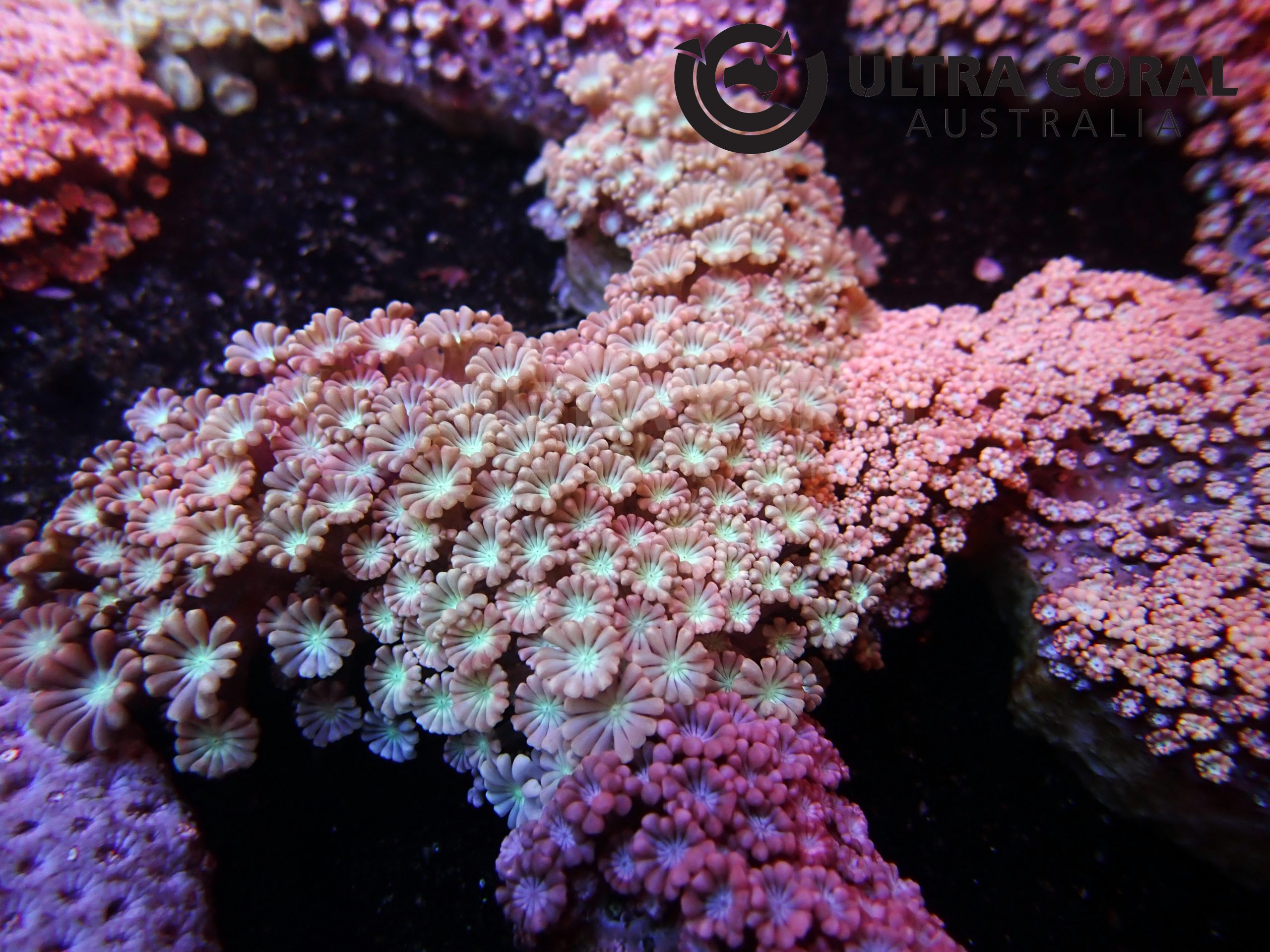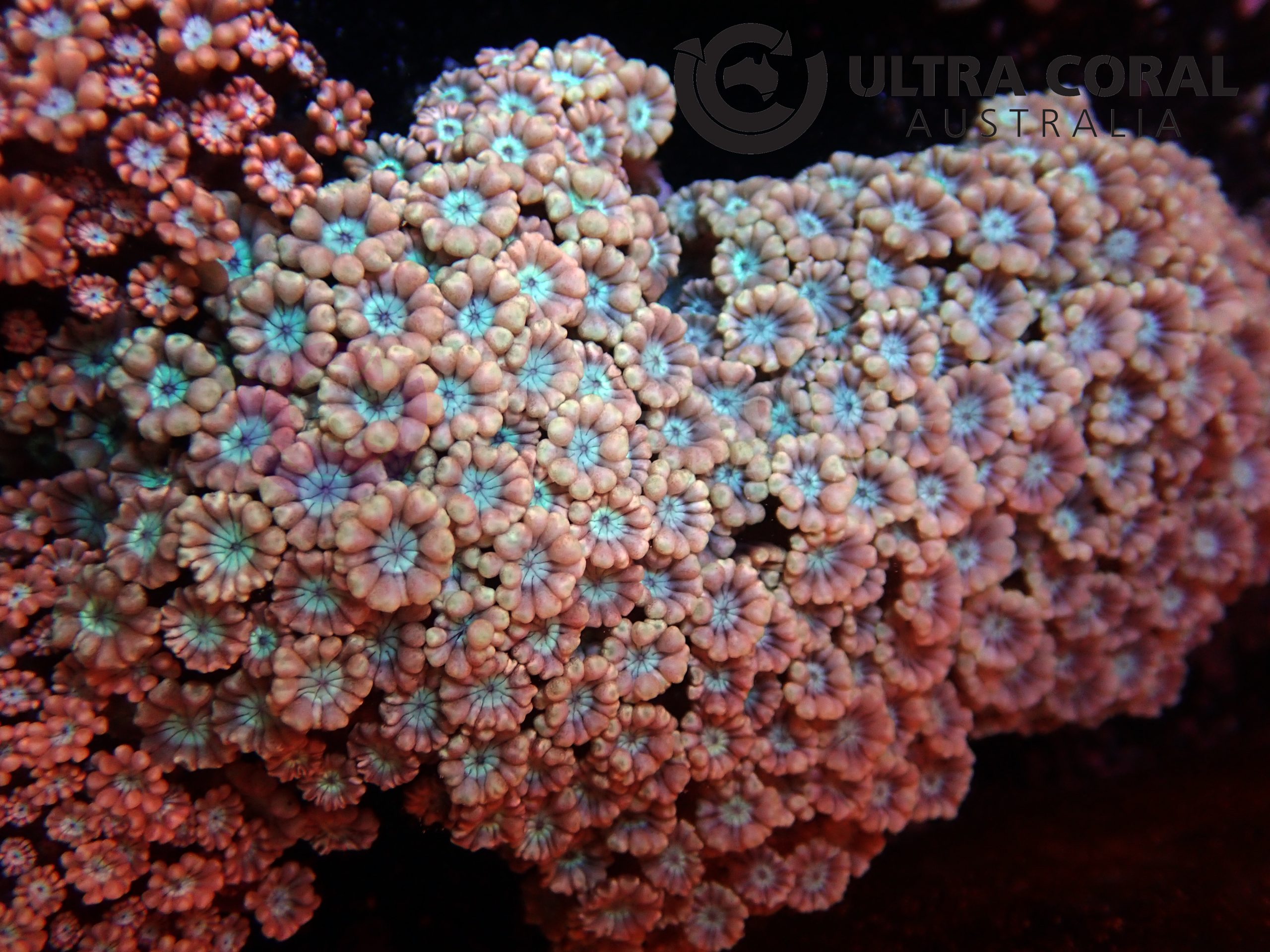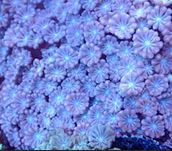Alveopora sp.

Alveopora can be found as massive or branching colonies and has previously been referred to as ?flowerpot coral? because it closely resembles species from the Goniopora genus. However, recent genetic studies confirm that Alveopora is actually more closely related to Acropora than it is to Goniopora species.
The flower reference can be seen during the day while the coral is exhibiting polyp extension, each tentacle displays knob-like ends with a contrasting coloured center which give the polyp end a daisy appearance. A clean distinction between the two species is that Alveopora polyps only have 12 tentacle tips and 12 accompanying septa, while the Goniopora species exhibit 24 of each.
In the wild, Alveopora distribution is wide but sporadic, usually inhabiting the reef slopes.
The skeletal structure of Alveopora is light, consisting of lattice-like walls and fine spines.
They are most commonly present in light brown, cream or green colours, however pink, yellow and blue colouration can also be seen in some colonies.
Basic Water Parameters
pH
8.0 to 8.3
Salinity
34 - 36ppt
Temperature
24.0 - 26.0 Celsius
Husbandry Requirements
Lighiting
50-100 PAR - 110-175 PAR
Flow
Passive circulation
Aggressiveness
Limited ability to damage other corals.
Acclimation Guide
- It is highly recommended to acclimate all corals to a new environment to prevent shocking corals.
- Place the corals in the water from the packing bags and slowly add the water from new environment (Dripping method is recommended).
- Use the water parameter above as a guide.
- When the vessel becomes full , replace the water with the new environment water by a small amount at a time.
- Ensure the water temperature matches with the new environment’s water.
- After the corals have spent adequate time in the acclimation water, gently place the corals to a new environment.
- It is recommended to place new corals under lower light intensity than usually required. Once corals show no signs of stress, it can be moved to higher lighting area gradually.”




